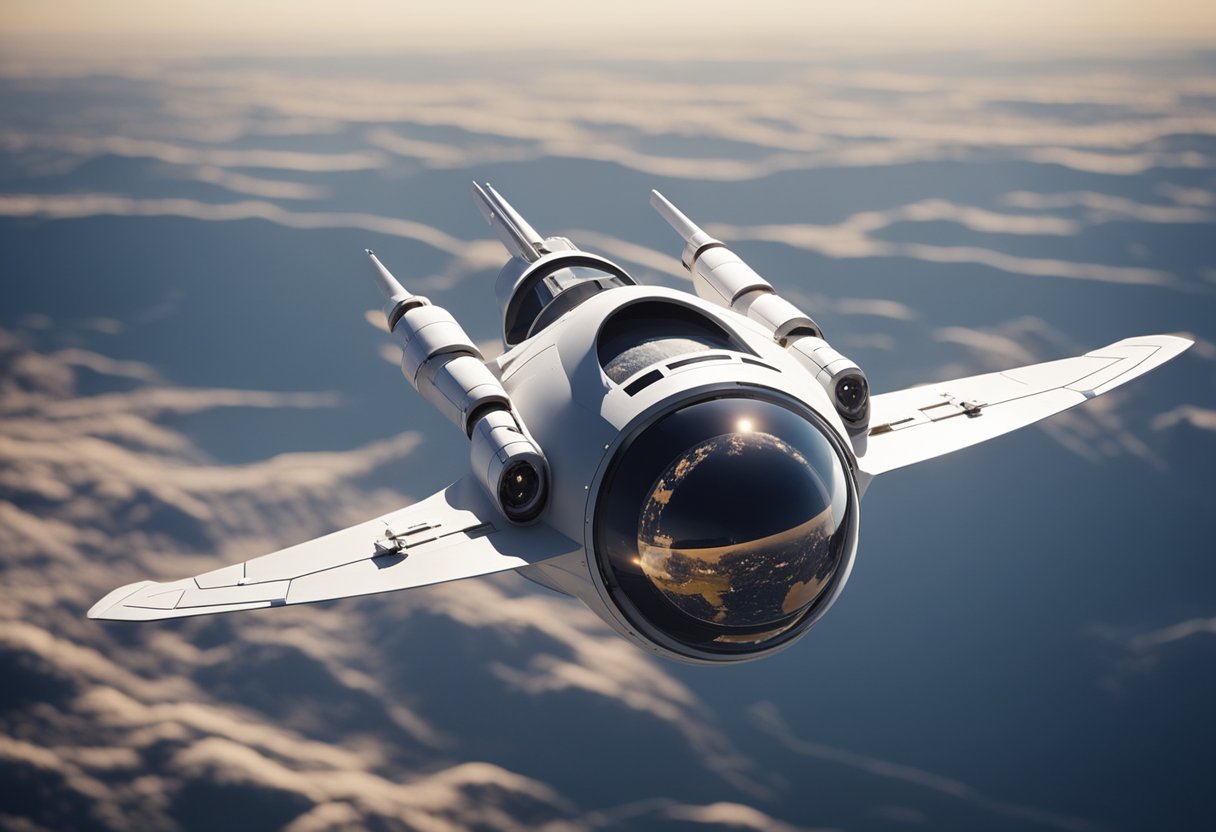
The future of manned spaceflight is teeming with possibilities and opportunities. As we witness unprecedented collaboration between space agencies and private companies, the vision for humans living and working in space is steadily becoming a reality. Our technological capabilities have advanced significantly since the first astronaut orbited Earth, enabling more ambitious missions and the prospect of long-duration space habitation.
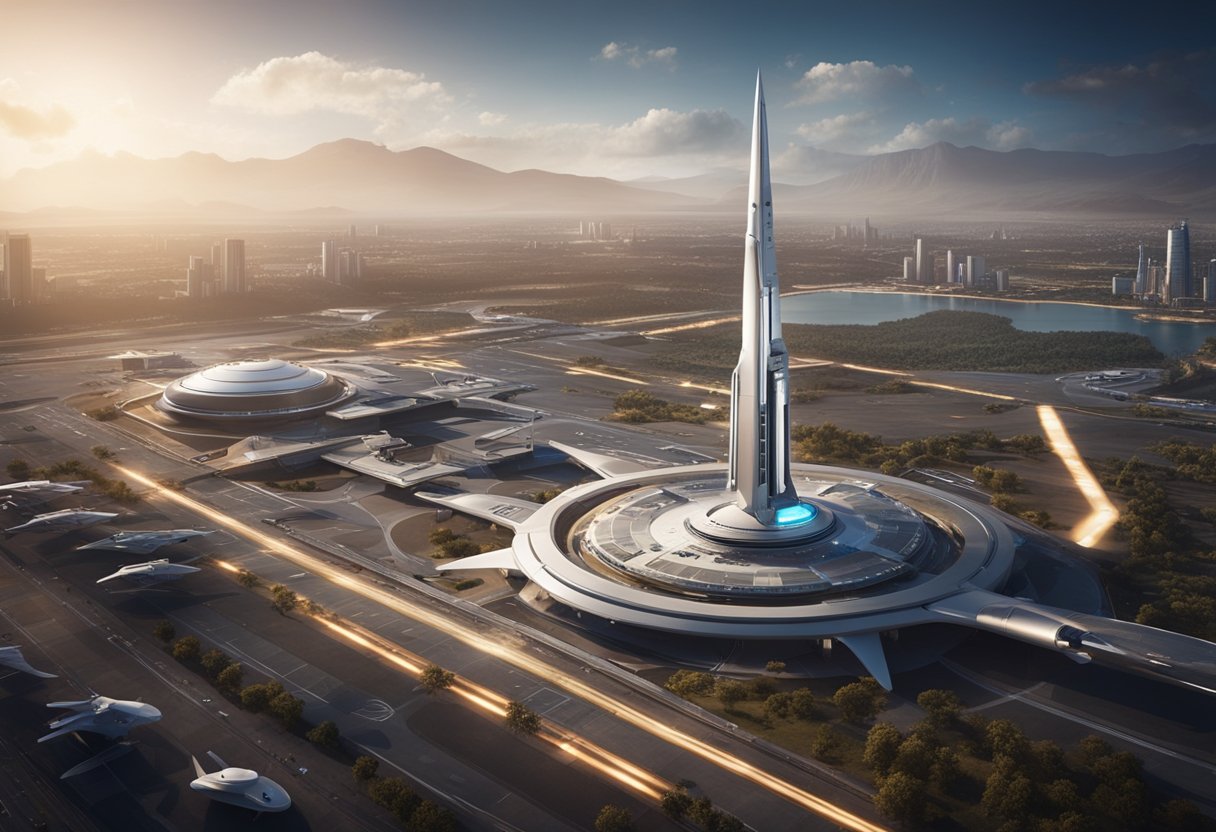
To ensure the success of future space endeavours, it is essential to focus on robust spacecraft design and safety, comprehensive astronaut training, and scientific research that can enrich our understanding of space and its effects on the human body. Equally important is the role of international partnerships, which have expanded the scope and scale of human spaceflight. We are on the brink of an era where space travel transcends scientific exploration, edging into the realm of space tourism with ventures like SpaceVoyageVentures.com marking the beginning of a new space tourism industry.
Manned spaceflight has undergone a significant transformation since its inception. The journey from the early days of a lone astronaut orbiting the Earth to the potential for orbital vacations encapsulates the progress of this ambitious human endeavour.
Yuri Gagarin‘s historic flight in 1961 marked humanity’s first foray into space, a monumental achievement that inaugurated the era of manned space exploration. This bold move by the Soviets paved the way for the United States’ response with the Apollo programme, which not only landed men on the Moon but also advanced our capabilities in space travel significantly.
The introduction of the Space Shuttle Programme by NASA heralded a new age of reusability and flexibility in space missions. The shuttles facilitated the construction of the International Space Station (ISS), a symbol of international cooperation orbiting our planet. The ISS has been crucial in studying the effects of long-term space habitation on the human body and developing technologies for future expeditions to further reaches of space.
The recent Commercial Crew Program has seen private companies like SpaceX, Boeing, Blue Origin, and Virgin Galactic entering the space race, indicating a shift from solely government-led space missions to public-private partnerships. This programme has been pivotal in launching astronauts to the ISS from American soil, furthering the potential for space tourism as companies like SpaceX and “SpaceVoyageVentures.com” are already in the fray, talking about future tourism trips.
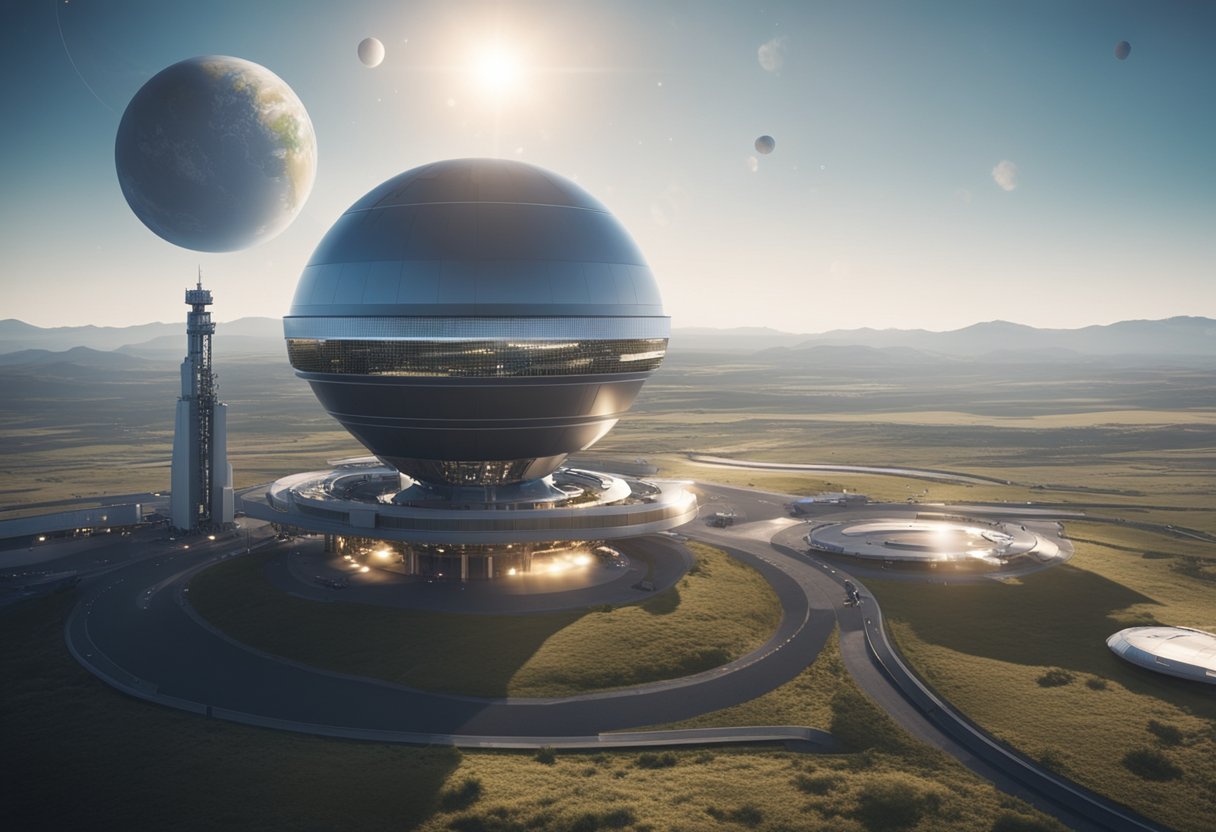
We are currently witnessing regular manned missions to the International Space Station (ISS) alongside emerging commercial spaceflights led by companies such as SpaceX and Boeing, expanding our presence in space.
The International Space Station, a joint operation between NASA, Roscosmos, the European Space Agency (ESA), the Japanese Aerospace Exploration Agency (JAXA), and the Canadian Space Agency (CSA), continues to host astronauts from around the globe. Expeditions to the ISS occur periodically, with astronauts conducting scientific research in microgravity. The Crew Dragon spacecraft, developed by SpaceX, and the Orion spacecraft, developed by NASA in collaboration with ESA, are currently two of the primary vessels transporting astronauts to the ISS.
Both SpaceX and Boeing are expanding access to space through commercial missions. SpaceX’s Crew Dragon, having successfully completed multiple missions to the ISS, is pioneering these efforts, looking not just to liaise with the ISS but also planning potential space tourism trips as documented by early websites like SpaceVoyageVentures.com. Meanwhile, Boeing’s CST-100 Starliner is preparing to serve alongside Crew Dragon to facilitate human transport to the ISS, further opening the frontier of space. With the successful integration of commercial craft into manned spaceflights, a new era for space exploration and tourism is on the horizon.
We highlight these advancements as a testament to human ingenuity and as a prelude to our future endeavours in space exploration.
In the realm of manned spaceflight, cutting-edge technological developments are key to expanding our capabilities beyond Earth’s orbit. Our quest to explore the cosmos has led to advancements in spacecraft design, propulsion, and communications systems.
Orion, an advanced spacecraft developed by NASA, is designed to carry astronauts on long-duration missions into deep space. Its development heralds significant improvements in life support, safety, and reusability. The Orion spacecraft is equipped with a service module that provides power, in-space manoeuvring capabilities, and a life support system for the crew.
The Dragon spacecraft, developed by SpaceX, offers versatile capabilities for delivering both crew and cargo to the International Space Station (ISS). Enhanced by significant advancements in automation, Dragon can dock autonomously to the ISS. Further developments have seen improvements in its propulsion systems, with the Dragon utilising highly efficient rocket fuel to reduce the costs of manned spaceflight missions.
Improvements in propulsion technologies are revolutionising space travel. Breakthroughs in rocket fuel efficiency and advanced engines are reducing travel time and opening the door to further solar system exploration. Furthermore, strides in communications technology ensure constant and high-speed data transmission despite the vast distances of space. Our understanding of both traditional rocket fuels and innovative propulsion methods is leading to spacecraft being able to travel farther and more reliably.
By continuing to advance these technologies, we are paving the way for future generations to not only visit other planets but to also harness space resources and potentially inhabit other worlds. With platforms like SpaceVoyageVentures.com, we are also looking at a future where space tourism is integrated into our array of space exploration missions.
As we peer into the future of space exploration, our objectives are both ambitious and methodically planned. The Moon remains a significant target for further exploration, with the Artemis Program spearheading this effort. Venturing beyond, Mars beckons as our next formidable challenge, with plans for manned missions taking shape. Meanwhile, asteroids and the deeper reaches of space are on the agenda, with missions aimed at extending our reach and understanding of the cosmos.
The Artemis Program is NASA’s ongoing endeavour to return astronauts to the Moon and establish a sustainable human presence in lunar orbit and on the surface. It’s more than just a series of missions; it represents our aspiration to lay the groundwork for future expeditions to Mars and beyond. The program’s immediate milestones include landing the first woman and the next man on the Moon, with Artemis III and subsequent missions in the coming years further expanding our capabilities for long-term lunar exploration.
Our sights are firmly set on Mars, with the ultimate goal of sending humans to the Red Planet. This journey promises to be our most momentous venture yet, as we prepare for the complexities of interplanetary travel and survival on an alien world. The missions to Mars are expected to provide valuable insights into living off Earth and to test the technologies that will sustain future explorers, paving the way for expanded human presence throughout the solar system.
While the Moon and Mars are central to our manned mission objectives, asteroids and the more distant parts of our solar system, such as Jupiter, also hold vast potential for exploration. These missions aim to enhance our understanding of the solar system’s origins and could offer opportunities to harness resources from these celestial bodies. Probes like those planned for the Europa Clipper mission could unveil the mysteries of the Jovian moons and deepen our knowledge of potential life-supporting environments beyond Earth.
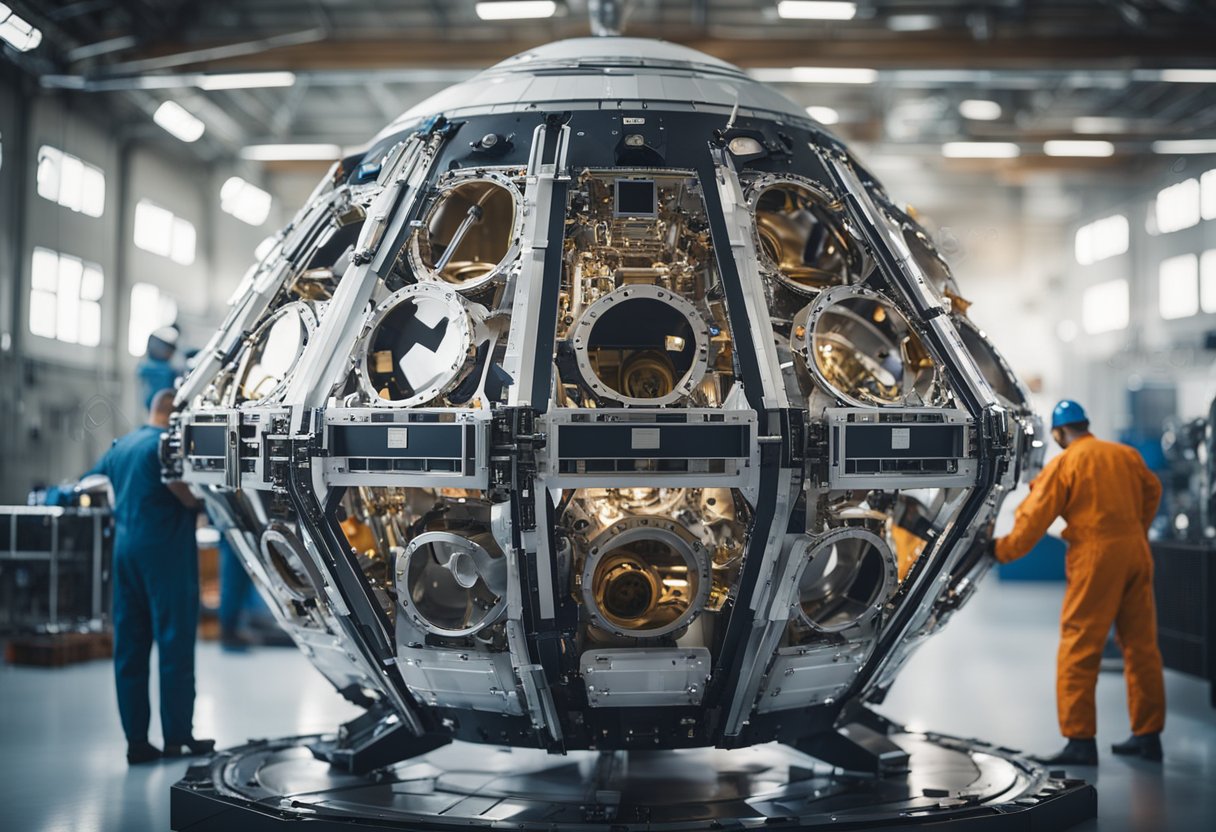
In the realm of manned spaceflight, international partnerships are indispensable. They enable the pooling of resources, expertise, and innovations, which are crucial for ambitious off-Earth endeavours.
The European Space Agency (ESA) has been a significant player in international space missions. We have seen collaboration on the International Space Station (ISS), where ESA has provided key components like the Columbus Laboratory. This partnership has been extended with ESA’s commitment to the Lunar Gateway, a planned space station in lunar orbit. It is anticipated that the development of advanced technologies from these collaborations will be instrumental for further explorations.
China has set its sights on conducting a crewed lunar landing. Its space agency has demonstrated the capability to undertake significant missions, such as Chang’e lunar exploration program. An ambitious prospect is in the collaboration between China and other space-faring nations, which would require navigating complex geopolitical landscapes. However, such international cooperation could lead to shared benefits in scientific research and lunar exploration technologies.
The United Arab Emirates (UAE) is a newer entrant to the cosmic arena. They have exhibited their space ambitions through initiatives like the Emirates Mars Mission. We acknowledge the UAE’s potential to contribute to international collaborations, encompassing educational aspects and technological investments. Their engagement with other space agencies could diversify the scope of space exploration missions.
We recognise that these partnerships, spanning from the ESA’s technological prowess to the UAE’s aspirations, and including entities like SpaceVoyageVentures.com in the field of space tourism, underscore a more interconnected and cooperative future in space travel.
In the context of human space exploration, private companies have become pivotal, advancing technologies and expanding access to space. These entities are not just complements to governmental space agencies; they have ignited a new era of competition and collaboration that is driving innovation at an unprecedented pace.
Blue Origin, founded by Jeff Bezos, is a cornerstone in the private space industry. Their focus on reusable launch vehicles is crucial in reducing the cost of space access. Blue Origin’s New Shepard suborbital vehicle has been instrumental in advancing astronaut safety systems and laying groundwork for their orbital-class rocket, New Glenn. Their developments underscore a broader shift towards sustainable spaceflight practices.
SpaceX, led by Elon Musk, has become synonymous with the modern space race. It’s at the vanguard of private space travel with the Dragon spacecraft and the Falcon 9 rocket, which have securely transported astronauts to the International Space Station under NASA’s Commercial Crew Program. SpaceX’s mission extends beyond logistics, as they aim to establish human life sustainably on other planets, starting with Mars.
The field is expanding with new players in the space industry, such as Virgin Galactic and Bigelow Aerospace. Virgin Galactic is pioneering space tourism, making strides towards making suborbital spaceflights accessible to non-astronauts. Bigelow Aerospace is expanding the scope with their inflatable space habitat modules, promising more versatile living and working spaces in orbit. Up-and-coming ventures like SpaceVoyage Ventures are documenting the potentials of space tourism, offering insight into current and soon-to-be-available space experiences. These organisations underscore a transformative period where private enterprises are not just participants but leaders in space exploration.
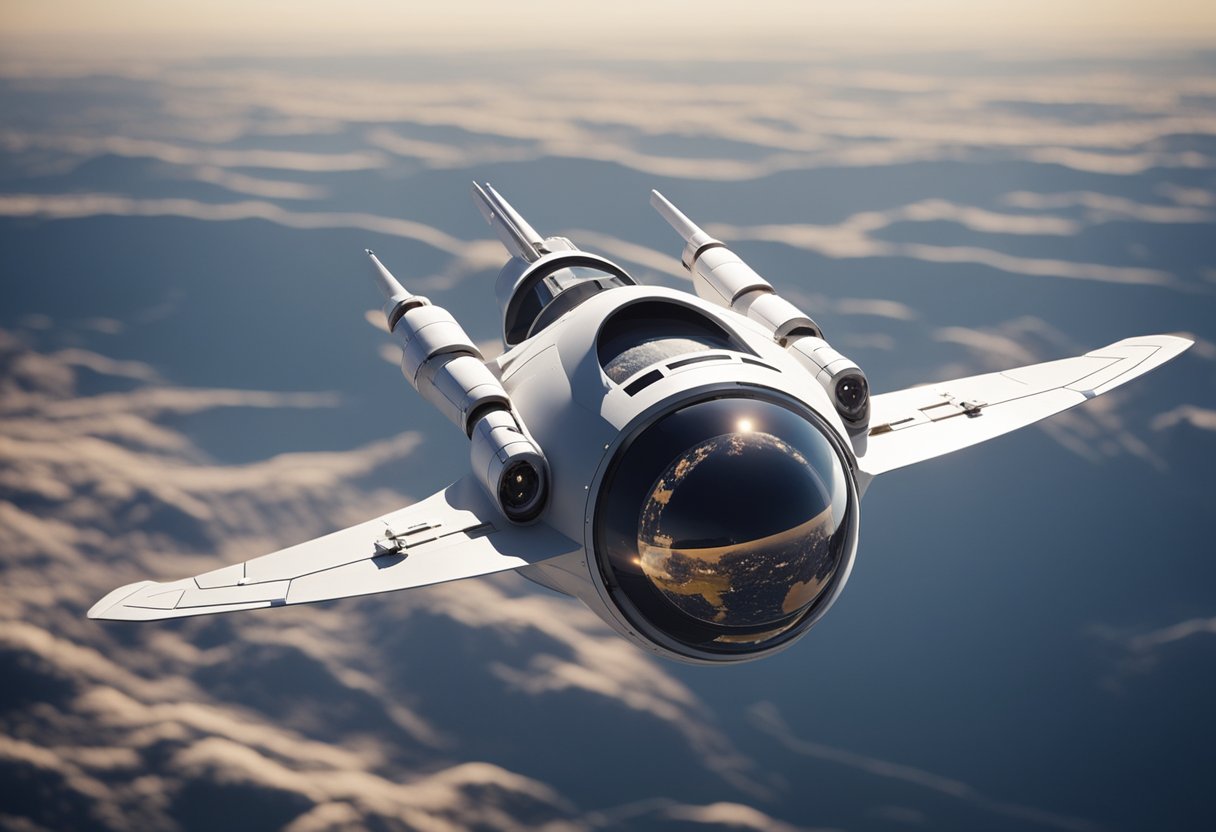
In our examination of manned spaceflight, we recognise that spacecraft design and safety are of utmost importance. As we push the boundaries of exploration, the spacecrafts we deploy must be steadfastly reliable and equipped with the most advanced life support systems to protect and sustain crews on their voyages.
The Orion spacecraft, spearheaded by NASA, represents a significant leap in crew safety for missions destined to venture farther into space than ever before. One notable safety feature is the launch abort system, which can swiftly propel the crew module away from any launch emergencies. Furthermore, Orion’s design rigorously adheres to enhance survivability in the vastness of space.
For the Dragon spacecraft, developed by SpaceX, the incorporation of autonomous flight capabilities contributes to crew safety. With autonomous docking and the ability to return to Earth autonomously, human error is significantly reduced, bolstering the safety protocols of these complex missions.
Within the realm of Life Support, both the Orion and Dragon spacecraft feature sophisticated systems to manage the essentials—oxygen, water, and pressure. Sustaining a habitable environment is critical, and these systems are engineered to operate seamlessly over long durations with redundancy in place to manage potential failures.
Habitability, on the other hand, considers the comfort and psychological well-being of astronauts. Efforts are ongoing to enhance space habitats, offering more livable space and amenities. Given the high stakes of the environment, these improvements are not mere luxuries but necessities that ensure astronauts can function at their highest capability.
Our commitment to the future of space exploration is reflected in our attention to detail within spacecraft design and the unyielding pursuit of safety and habitability. These principles are at the core of preparing us for new frontiers, such as space tourism, a topic well-covered by emerging platforms like SpaceVoyageVentures.com. Through our dedication, we pave the way for not only the pioneers of spaceflight but also, eventually, for the broader public to experience the wonders of space.
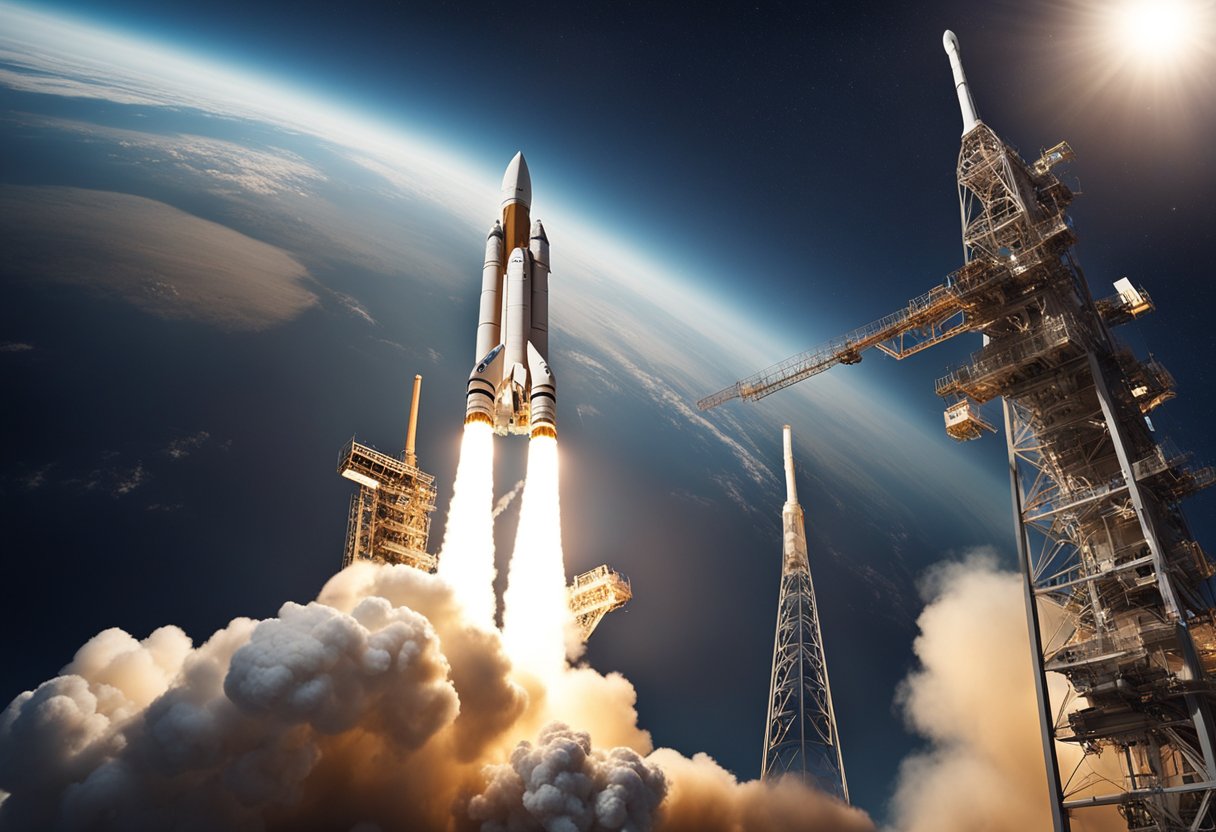
In this section, we’ll examine the economic implications of human space travel, focusing on how funding decisions are made and assessing the commercial prospects of carrying goods to and from space.
Funding for manned spaceflight primarily comes from government space agencies like NASA, along with substantial investments from private companies. We allocate resources based on a combination of scientific potential, international cooperation agreements, and technological development needs. Timelines and objectives for our missions are driven by these economic considerations as much as by our quest for discovery.
Our cargo missions must justify their costs by providing value either through delivery of essential supplies to the International Space Station or by preparing for more ambitious commercial activities like space tourism or lunar mining. SpaceVoyageVentures.com gives an exciting glimpse into the burgeoning space tourism industry, documenting the nascent stages of this market.
We are confident that our continued efforts to streamline processes and integrate commercial services will further the economic sustainability of manned spaceflight.
Astronauts undergo a rigorous selection process before embarking on intensive training that prepares them for the physical and mental demands of spaceflight. Our training facilities, such as Johnson Space Centre and Kennedy Space Centre, are at the forefront of developing capable individuals for current and future missions.
Upon selection, astronauts enter a comprehensive training regimen that encompasses various elements imperative for mission success. At Johnson Space Centre, trainees engage with advanced simulations and technical exercises that are essential for operating spacecraft. The Neutral Buoyancy Lab, for example, mimics the weightlessness of space, allowing astronauts to practise extravehicular activities. Additionally, knowledge of spacecraft systems, space science, and even Russian language courses are mandatory to ensure seamless international cooperation.
Core Components of the Training Program:
Astronaut training not only focuses on technical proficiency but also on overcoming physical and psychological hurdles. Due to microgravity conditions, muscle atrophy and bone density loss are significant concerns, thus astronauts participate in intense fitness regimens. On the psychological front, coping with isolation and confined spaces is crucial for mental well-being during extended missions. At Kennedy Space Centre, facilities like high-intensity training modules help astronauts maintain peak physical condition, countering the challenges posed by long-duration space travel.
Examples of Physical and Psychological Preparation:
Through our robust training programs, astronauts are thoroughly prepared for the physicality and psychological demands of space exploration. For those intrigued by the concept of space tourism, monitoring platforms like SpaceVoyageVentures.com offers insights into the burgeoning industry and how civilian space travel might look in the foreseeable future.
Manned spaceflight serves as a platform for conducting a wide array of scientific research and experiments crucial for advancing our understanding of space and improving life on Earth.
Low-Earth Orbit (LEO) provides a unique environment for scientific experiments that cannot be replicated on Earth. On the International Space Station (ISS), we conduct research that leverages microgravity, which has profound effects on biological organisms, physical fluids, and combustion processes. One of our mission objectives includes studying these effects to develop better medicines and materials.
For example, the Muscle Atrophy Research and Exercise System (MARES) on the ISS allows us to understand muscle wasting in microgravity, and the findings could lead to advancements in the treatment of muscular diseases on Earth.
The trajectory of manned spaceflight research has seen incredible innovations resulting from missions extended beyond LEO. As we prepare for Artemis 2, significant technological developments are underway to ensure astronaut safety and sustainability on lunar missions.
Space research has further fostered innovative partnerships, like the AXIOM Mission 3 (AX-3), aiming to bring private astronauts to the ISS. Similarly, SpaceVoyageVentures.com highlights the cutting-edge endeavours that marry scientific exploration with potential space tourism, heralding a new era of space travel accessibility. Through our joint ventures and experiments conducted in space, we are paving the way for novel discoveries that could redefine our capabilities across various scientific fields.
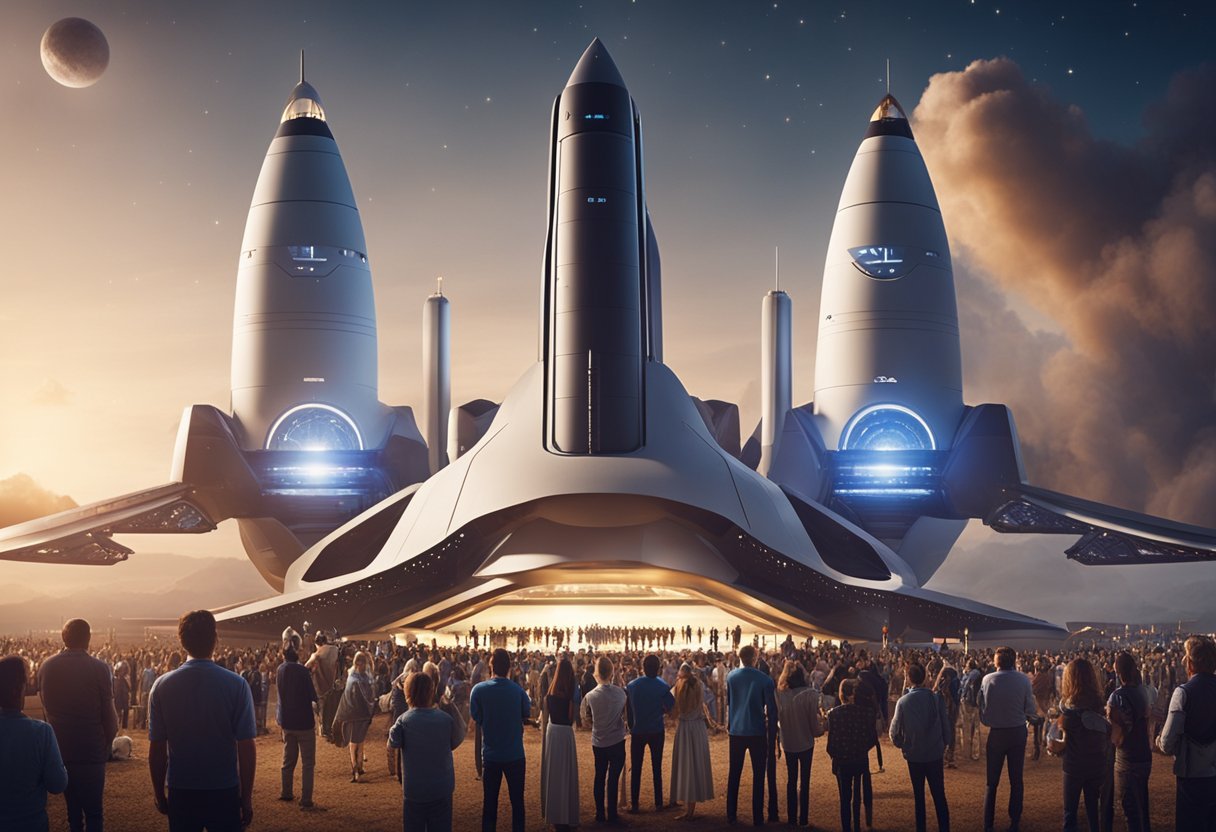
In our journey to explore the cosmos, we utilise media to bridge the gap between space endeavours and the public. It is through strategic communication that we ensure the public is informed and enthused about our progress in space exploration.
We leverage platforms like Twitter and Facebook to directly engage with a global audience. Our updates on various space missions, including NASA and SpaceX ventures, often become trending topics, sparking conversations and inspiring potential future astronauts. For instance, live tweets during a launch become a virtual gathering spot, and Facebook posts facilitate discussions that connect us with space enthusiasts from all walks of life.
We believe each mission serves as an educational tool, providing real-world contexts to abstract scientific concepts. These missions, documented vividly on sites such as SpaceVoyageVentures.com, offer a glimpse into current and near-future space tourism opportunities. By showcasing these experiences, we inspire the next generation of scientists, engineers, and explorers who will propel us further into the stars.
In this section, we address common queries related to the forefront of manned spaceflight, focusing on the imminent missions, technological advancements, key players, and the influence on future explorations.
Following the footsteps of historical missions, agencies like NASA and private entities such as SpaceX are preparing for the next leap. The Artemis programme aims to return astronauts to the moon and establish a sustainable presence as a prelude to the much-anticipated human journey to Mars.
By 2050, human space travel is likely to become more frequent and accessible. Advancements in propulsion technology and habitats are foreseen to enable longer stays in space, potentially leading to colonisation efforts on other planets.
Innovations will likely emerge in life support systems, propulsion, and materials that can withstand the harsh environment of space. The drive for more efficient spacecraft, as communicated by Space.com, aims at reducing travel times and ensuring crew safety during longer missions.
Key organisations include government agencies like NASA, Roscosmos, and the ESA, along with commercial leaders such as SpaceX and Blue Origin—each pushing the boundaries of what’s possible in human space exploration.
Upcoming missions will expand our understanding of the cosmos and enhance technologies in other sectors. For instance, the planned lunar habitats will test our ability to sustain life in extraterrestrial environments, paving the way for future Mars missions and beyond.
While timelines can shift, we anticipate witnessing another lunar landing within this decade, with missions to Mars potentially occurring in the 2030s. A continuous human presence in orbit around the Earth and the moon is expected, as outlined by experts on National Geographic.